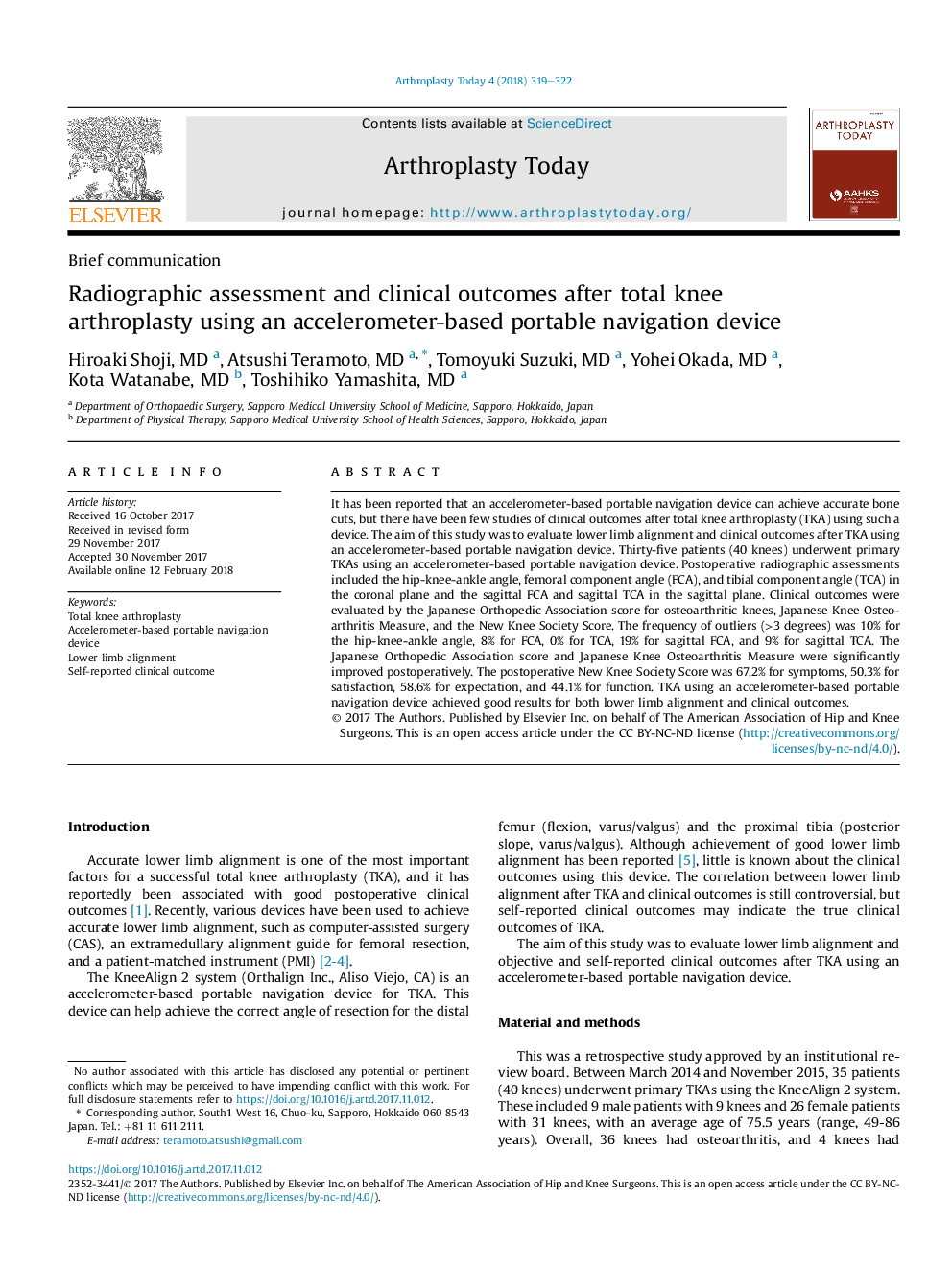| Article ID | Journal | Published Year | Pages | File Type |
|---|---|---|---|---|
| 8958608 | Arthroplasty Today | 2018 | 4 Pages |
Abstract
It has been reported that an accelerometer-based portable navigation device can achieve accurate bone cuts, but there have been few studies of clinical outcomes after total knee arthroplasty (TKA) using such a device. The aim of this study was to evaluate lower limb alignment and clinical outcomes after TKA using an accelerometer-based portable navigation device. Thirty-five patients (40 knees) underwent primary TKAs using an accelerometer-based portable navigation device. Postoperative radiographic assessments included the hip-knee-ankle angle, femoral component angle (FCA), and tibial component angle (TCA) in the coronal plane and the sagittal FCA and sagittal TCA in the sagittal plane. Clinical outcomes were evaluated by the Japanese Orthopedic Association score for osteoarthritic knees, Japanese Knee Osteoarthritis Measure, and the New Knee Society Score. The frequency of outliers (>3 degrees) was 10% for the hip-knee-ankle angle, 8% for FCA, 0% for TCA, 19% for sagittal FCA, and 9% for sagittal TCA. The Japanese Orthopedic Association score and Japanese Knee Osteoarthritis Measure were significantly improved postoperatively. The postoperative New Knee Society Score was 67.2% for symptoms, 50.3% for satisfaction, 58.6% for expectation, and 44.1% for function. TKA using an accelerometer-based portable navigation device achieved good results for both lower limb alignment and clinical outcomes.
Related Topics
Health Sciences
Medicine and Dentistry
Orthopedics, Sports Medicine and Rehabilitation
Authors
Hiroaki MD, Atsushi MD, Tomoyuki MD, Yohei MD, Kota MD, Toshihiko MD,
